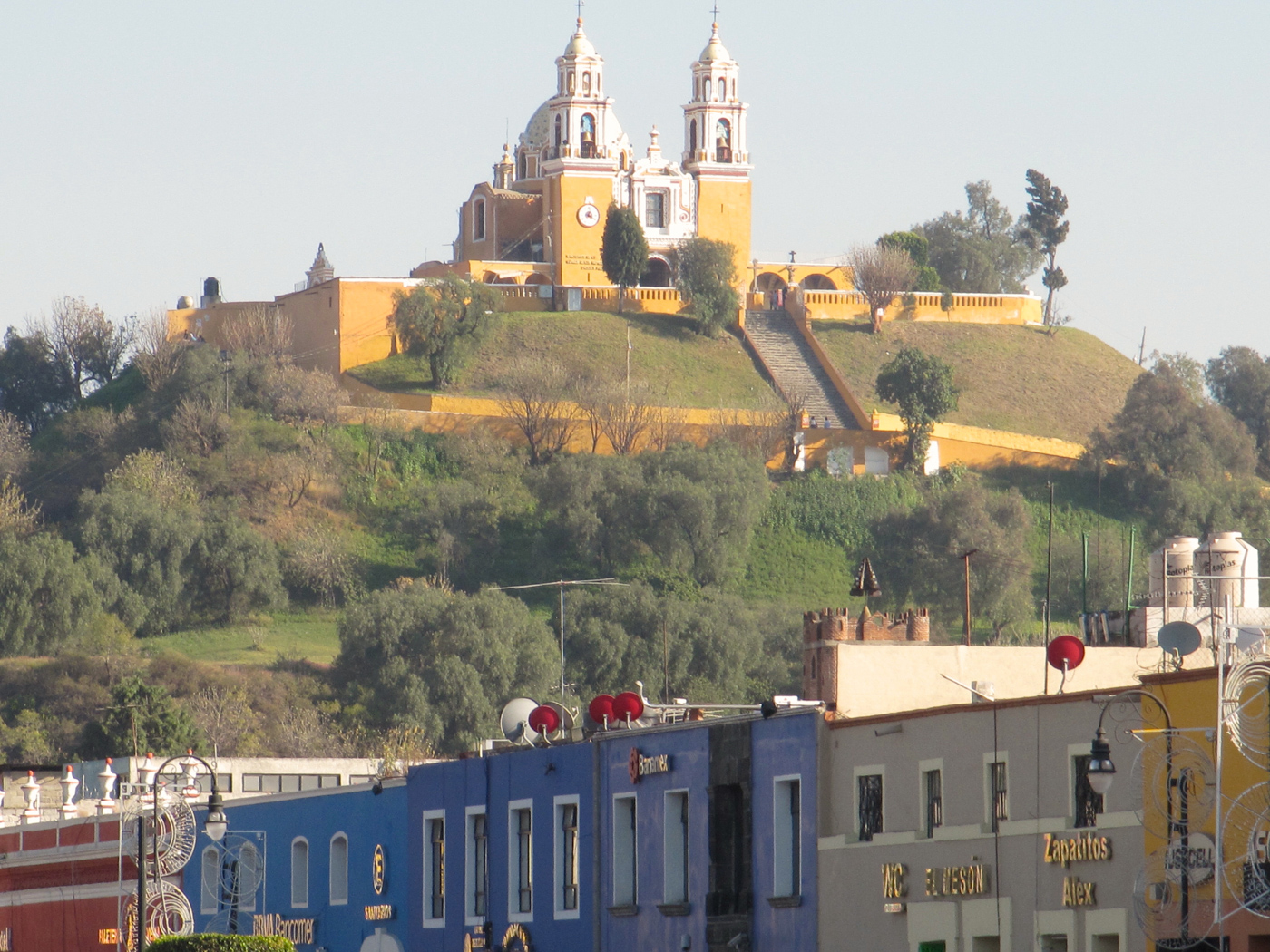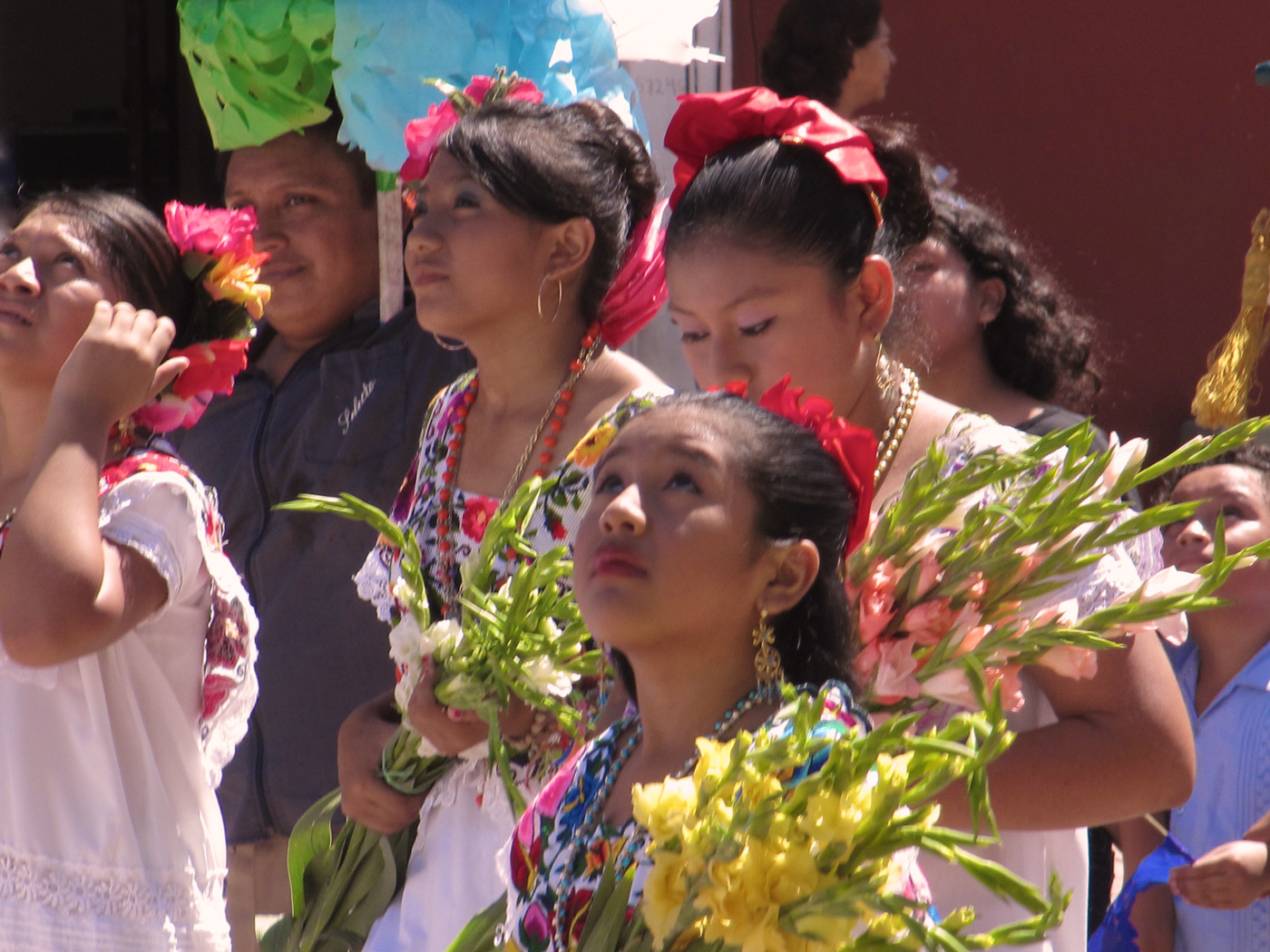A Journey to the End of Time

If you want to visit the most massive pyramid in the world there’s no need to worry about security in Mexico. Visit Cholula, your first glance tells you, by a baroque church on a hill. Then look again. That hill is the pyramid.
Isn’t Mexico dangerous? Latin America is often seen in cliches, not least by newspapers. The current cliche is, to quote the lyrics of a Warren Zeavon song, that any visitor to Mexico will soon be telegramming Send lawyers, guns and money, dad get me out of this. I would only worry about this if I were going to conduct illegal business in competition with the undoubtedly ruthless Mexican gangs. For honest visitors, I found the people so friendly that I even dropped some old security rules, like not reading maps in the street. Whenever I consulted my street plan, a local would immediately be at my elbow, not just to advise, but to walk with me until my destination was in view.
All winter I travelled through the Yucatán and the Gulf of Mexico coast to Veracruz, before heading inland in the footsteps taken by Hernán Cortés in 1519. In contrast to the Neolithic farming lives of the Caribbean cultures, the mainland showed him sophisticated cities, some thriving, others, like the Mayan, in glorious decay. He knew these peoples were civilised by any measure (except, for him, their being heathens) and had been civilised for a long time. In conquering the Aztecs, he brought down a city, Tenochtitlán, (modern Mexico City) which was the largest and best run metropolis on earth. The image of the Aztecs as bloodthirsty savages needs rewriting, Seville, the biggest Spanish city he knew well, had nothing to compare.
To take a single example, beginning two hundred years before Christ, Palenque flourished for a thousand years, then there was a change in Maya life. Coastal settlements flourished; sea trade was becoming more important in a land where the only pack animals were men. The overall population remained much the same, and despite the claims of populist narrators like Jared Diamond, there was no collapse, but, in a region of city states, power moved from one to another, particularly from the south and east of Yucatán towards the north.
Today’s traveller can see Mexico in comfort by using the network of buses whose timetables and tickets are available on the internet. They keep excellent time, and the bus stations are safe and well-organised places. If you still want to experience chickens and other market goods in the seat next to you, local minibuses known as colectivos will still fit the bill.

My journey was for a travel book; I write about my experiences and the history and culture of places I visit. I therefore visited not only the stellar Maya jungle cities of Palenque, Chichén Itzá, Uxmal and others but also out of the way sights like Bonampak, home of the best murals, or Yaxchilan, reached by rough roads and a final 12 mile canoe journey on the crocodile-lined river Usumacinta. I was accompanied around Yaxchilan by howler monkeys, their stomachy growls echoing round the clearings, while small mammals such as agoutis scuttled out of my path.
The result of my journey was a portrait of Mexico far more complex than I had anticipated. Being raised on television Westerns whose cowboys rode into the dusty deserts of north Mexico, had not prepared me for the lushness of the south. I was shaken by the riot of ancient cultures, which, lacking pack animals, developed as city-states as compact as those of ancient Greece. Few know of the Zapotec culture, but their city of Monte Alban developed a pre-Maya calendar accurate to 16 seconds a year. Our modern Gregorian calendar errs by 11 minutes. Structures on the site incorporate ratios in their dimensions which were derived from measurements of the movement of the planet Venus against the stars: a cycle taking 584 days. The heavens and the earth were united in their temples and observatories.
Mexico handsomely repays a little homework and a willingness to miss a few headline sites and visit the less famous cultural regions, or, in well-trodden areas like the Yucatán, visit modern Maya settlements and use local guides so your expenditure benefits those communities directly. Remember: you are not spending money, you are investing in memories.

John Harrison’s book 1519 A Journey to the End of Time is published by Parthian in August 2015. His last travel book Cloud Road was Wales Book of the Year. Forgotten Footprints, Lost Stories from the Discovery of Antarctica, won the 2014 British Guild of Travel Writers’ narrative guide of the year.
www.cloudroad.co.uk
Tailor-made holidays
Flexible, custom-made holidays to Latin America created to match your exact requirements: our tailor-made itineraries are as unique as the clients for whom they are designed.
Design my tripPapagaio
Your edit for Latin American inspiration
Our exciting range of articles on Latin America explore everything from iconic destinations and lesser-known cultural gems to delicious traditional recipes. You’ll also find exclusive travel tips, first-hand client reviews and the chance to get your personal questions answered by our travel experts.
View Extraordinary Inspiration






































